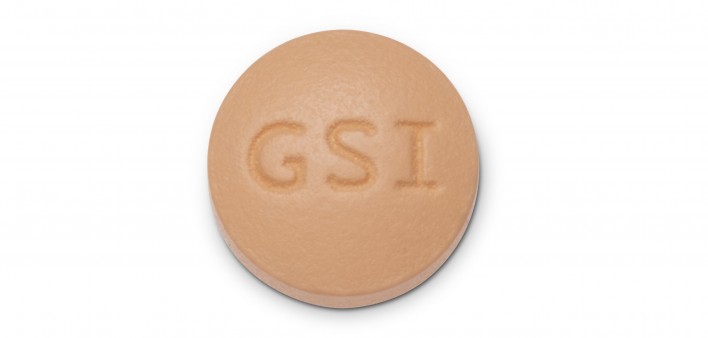Gilead Sciences’ new version of its key antiretroviral (ARV) tenofovir performed well and offered bone- and kidney-related benefits to African Americans with HIV in an analysis of 96-week results from a recent trial.
Findings from the randomized, double-blind, double-dummy, active-controlled study were presented at the IDWeek 2017 conference in San Diego. The study included 663 people with HIV who had an undetectable viral load at the outset, were taking Truvada (tenofovir disoproxil fumarate/emtricitabine) plus a third ARV and had an eGFR of 50 or above, indicating good kidney function.
The participants were randomized to continue receiving their current regimen or to receive Descovy (emtricitabine/tenofovir alafenamide) instead of Truvada. The difference between the two combination tablets is that Descovy contains a new version of tenofovir known by the shorthand TAF, which research has indicated leads to improved markers of bone and kidney health compared with the older version of tenofovir that is in Truvada and which is known as TDF.
The participants all received three tablets to take daily, including one that served as a placebo dummy tablet so they would not know into which study arm they had been randomized.
A total of 333 people were switched to the TAF-inclusive regimen while 330 remained on their original TDF regimen.
Respective demographics of the TAF and TDF arms were: median age, 48 and 49; 73 percent and 77 percent white, 21 percent and 20 percent Black, and 6 percent and 3 percent “other” race; median eGFR, 98 and 100; median length of time on Truvada before the study, 5.2 years and 5.0 years.
After 96 weeks of treatment, 89 percent of those in both study arms had an undetectable viral load, indicating that the TAF-inclusive regimen was noninferior, or as effective as the TDF-inclusive regimen.
The researchers broke down their findings by the race of participants: Black or non-Black. At 96 weeks, among Blacks, 87 percent and 88 percent of those in the TAF and TDF arms had a fully suppressed viral load, respectively; among non-Blacks, the corresponding respective rates were 89 percent and 90 percent.
The average increase in CD4 count was 47 for those on TAF and 84 for those on TDF among Blacks, and a respective 52 and 37 among non-Blacks.
The main adverse events experienced by all participants were headache, cough, back pain, upper respiratory tract infection, head cold symptoms, diarrhea and joint pain.
Just one African-American participant, in the TDF arm, stopped treatment due to an adverse health event. A respective eight and three non-Black participants in the TAF and TDF arms stopped treatment for this reason.
Among the Black participants, those in the TAF arm saw their eGFR increase by a median 10.1 while those in the TDF arm experienced an increase of 4.0. The respective corresponding figures for non-Black participants were 10.0 and 3.9. Other kidney health markers, including urine in the protein, were also improved among all participants who received TAF, compared with those who received TDF.
After 96 weeks of treatment, the Black participants’ bone mineral density (BMD) at the spine increased by an average of 2.2 percent among those on TAF while dropping 0.7 percent among those on TDF. The corresponding respective figures for non-Black participants were a 2.2 percent increase and no change. There was no significant difference in BMD at the hip for the Black participants, but among the white participants, the corresponding respective figures were a 2 percent increase and a 0.5 percent decrease.
There were also indications that TAF was associated with improved lipid figures compared with TDF, specifically total cholesterol, HDL cholesterol among Blacks, and total cholesterol, LDL cholesterol and triglycerides among non-Blacks.







Comments
Comments